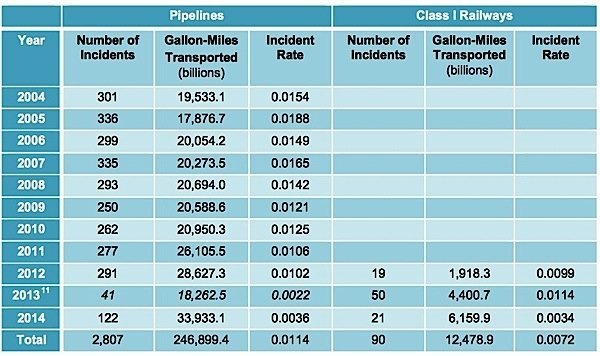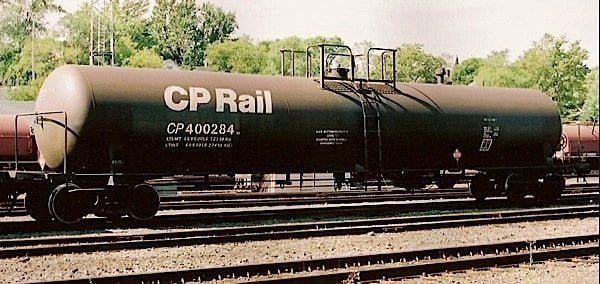The two main means of transporting crude oil in Canada are equally safe, according to a report prepared by a group that represents one of those means, the Railway Association of Canada. This contradicts a report prepared last summer by the Fraser Institute which found that pipelines were 4.5 times safer than railways.
The newer report, Canadian Crude Oil Transportation: Comparing the Safety of Pipelines and Railways, compares data for the two modes of transport and finds that each has an excellent safety record and each is necessary to handle Canada’s crude oil. Between 2012 and 2014, Canadian crude producers moved 252.7 billion gallons of crude oil. A statistically small amount of that was spilled in transport: 0.0003 per cent, though that still amounts to 729,700 gallons spilled. according to the report’s numbers.
Available data shows that though differences between the modes vary by metric and from year to year, those differences are small. Both modes have excellent safety records and are taking steps to improve safety further. Most critically, both pipelines and railways are needed to handle Canada’s production of crude oil and related products. Both will need to add yet more capacity as Canadian crude oil production grows in the future.
According to the study, using the “incident rate,” which looks at the number of spills each mode of transport has experienced, gives a more accurate comparison than the “spill rate,” which looks at the total volume of oil spilled. The incident rate metric considers three data points: the total number of incidents; the total volume of crude transported; the total distance the crude is moved in annual miles.

By this metric, the number of spills is very low for both modes: fewer than 0.2 incidents per billion gallon-miles, in which a gallon-mile is defined as the total volume moved over the total distance.
In 2014, for example, rail carriers reported 21 spill incidents, for just over 6 billion gallon-miles of crude transported. That same year, pipelines reported 122 incidents, for nearly 34 billion gallon-miles of crude. Despite the huge difference in volumes, the incident rate works out to be almost identical: 0.0034 and 0.0036 respectively.
As for spill rates, railways spilled less crude by volume in 2012 and 2014 than pipelines did, due mainly to lower volumes of crude being transported. The average spill from a pipeline between 2004 and 2014 was 2,139 gallons of crude, the report says. The majority of railway spills (86.7 per cent), on the other hand, involved the release of less than 25 gallons.
































